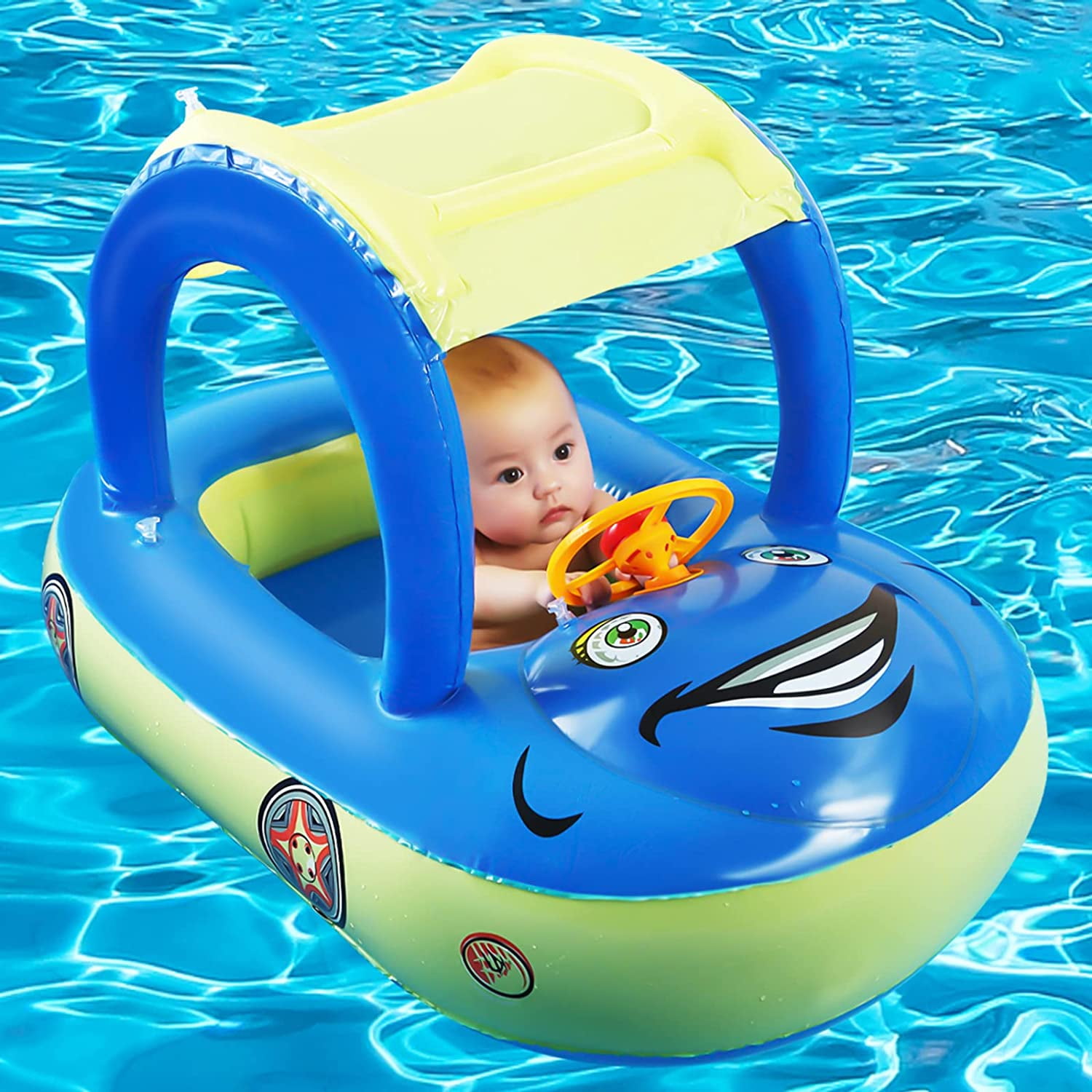
Baby Pool Floats: A Comprehensive Guide for Parents
Introduction
Summertime is synonymous with fun and frolic, and for babies, nothing beats splashing around in a refreshing pool. However, ensuring your little one’s safety and comfort while they enjoy the water is paramount. Baby pool floats provide a safe and supportive environment for babies to experience the joys of swimming, allowing them to develop water confidence and motor skills.
This comprehensive guide will delve into the world of baby pool floats, exploring their types, features, safety considerations, and how to choose the best float for your baby’s needs.
Types of Baby Pool Floats
Baby pool floats come in a wide variety of shapes, sizes, and designs, each catering to different ages, sizes, and developmental stages. Here are the most common types:
-
Neck Floats: These floats are designed for babies as young as 3 months old. They feature a soft, inflatable ring that supports the baby’s head and neck, allowing them to float upright in the water.
-
Seat Floats: Seat floats are suitable for babies who can sit up unassisted, typically around 6 months old. They have a sturdy seat with a backrest and leg holes, providing support and stability while allowing the baby to splash and play.
-
Activity Floats: Activity floats are designed for older babies and toddlers who are comfortable in the water. They feature interactive elements such as toys, water jets, and splash pads, encouraging water exploration and play.
-
Swim Trainers: Swim trainers are designed to help babies learn to swim. They feature adjustable straps and floats that support the baby’s body while allowing them to practice kicking and paddling.
Features to Consider
When choosing a baby pool float, consider the following features:
-
Age and Weight Capacity: Ensure the float is appropriate for your baby’s age, weight, and developmental stage.
-
Material: Choose floats made from durable, non-toxic materials such as PVC or nylon.
-
Safety Features: Look for floats with safety features such as a canopy for sun protection, a non-slip surface, and multiple air chambers for added buoyancy.
-
Comfort: The float should provide adequate support and comfort for your baby. Consider floats with adjustable straps or a padded seat.
-
Convenience: Choose floats that are easy to inflate, deflate, and transport.
Safety Considerations
Baby pool floats are not a substitute for adult supervision. Always follow these safety guidelines:
- Never leave your baby unattended in the water.
- Choose a float that is appropriate for your baby’s age and weight.
- Inflate the float properly and check for leaks before use.
- Use the float in a shallow pool with a depth of no more than 12 inches.
- Provide shade for your baby to prevent sunburn.
- Take breaks from the water every 15-20 minutes to prevent hypothermia.
How to Choose the Best Baby Pool Float
To choose the best baby pool float for your needs, consider the following factors:
-
Your baby’s age and developmental stage: Choose a float that is appropriate for your baby’s abilities and provides the necessary support.
-
Your baby’s comfort: Look for floats with adjustable straps, padded seats, and a non-slip surface to ensure your baby’s comfort and safety.
-
Your pool size and depth: Choose a float that is suitable for the size and depth of your pool.
-
Your budget: Baby pool floats range in price from affordable to high-end. Set a budget and explore options within your price range.
Conclusion
Baby pool floats can provide a safe and enjoyable way for babies to experience the joys of swimming. By choosing the right float and following safety guidelines, you can create a fun and memorable summer experience for your little one. Remember, the most important factor is always your baby’s safety and comfort.
